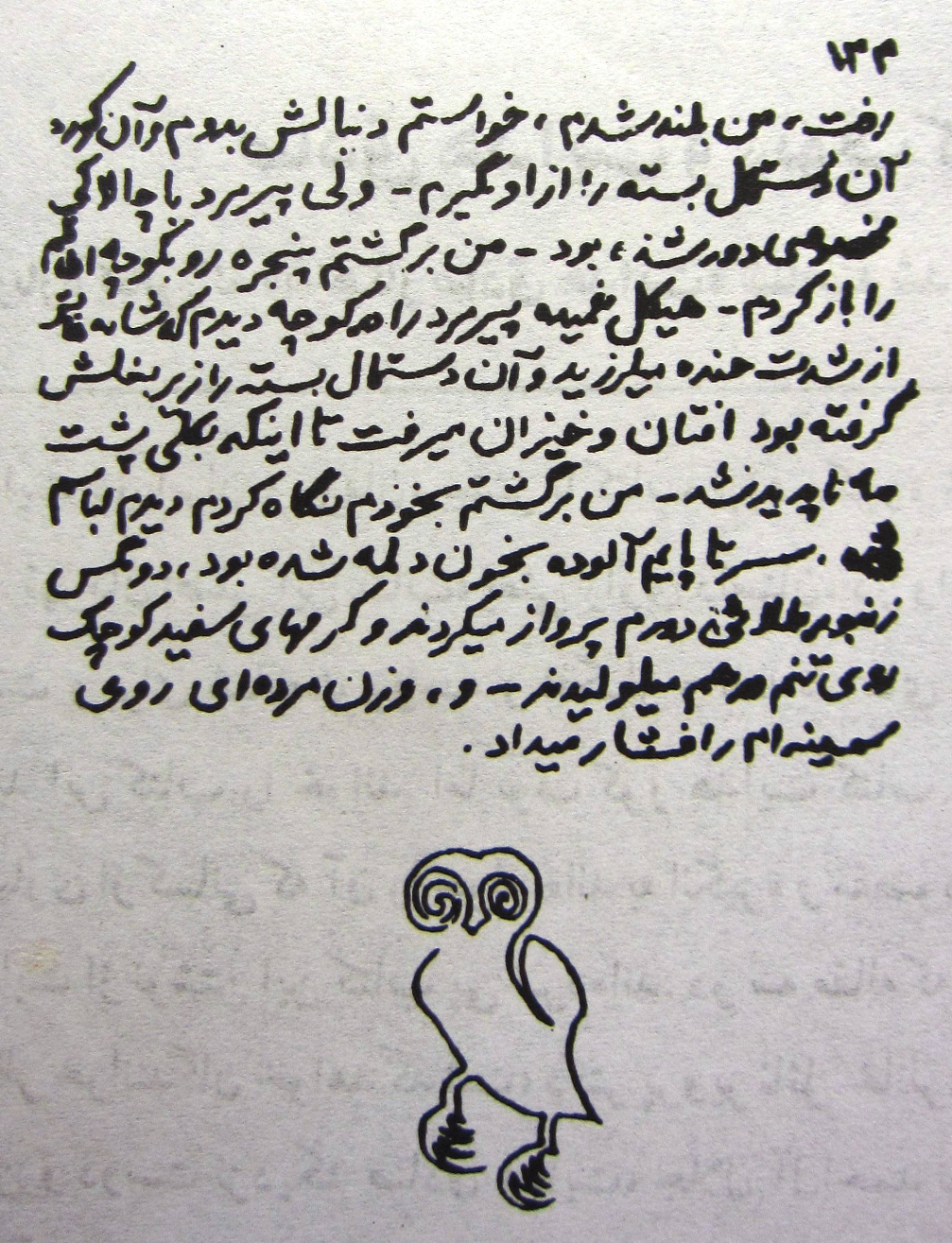“In life there are certain sores that, like a canker, gnaw at the soul in solitude and diminish it.”
― Sadegh Hedayat, The Blind Owl
An opium-induced nightmare featuring every inner demon possible, Sadegh Hedayat’s The Blind Owl is the most important piece of modern Iranian literature. Initially banned in Iran for its tendency to induce teenage suicide, it is a masterpiece of psycho-fiction, replete with potent and disturbing symbolism. The narrator, an alcoholic and opium-addict, is a painter of pen cases who struggles with the loss of a mysterious lover, and begins writing this confession to better know himself. His story is told through disquieting surrealist imagery and artful repetition that feels like endless loops on a downward spiral, violently evocative in its description of the human condition, conveying his story through eerily simple language. As the father of Persian modernism, Hedayat creates a work that throws the reader into the opium-haze margins of insanity, lost in the labyrinth of his amorphous storytelling.
Hedayat’s life is inexorably tied to this dark masterpiece of Persian literature, and, like all great works, The Blind Owl contains undeniably autobiographical elements. Sadegh Hedayat was born to an aristocratic family in Iran and sent to Belgium by his government at the age of 22 to pursue a degree in civil engineering. Dissatisfied with this path, he moved to Paris and switched to the study of architecture, and then dentistry, at which point he had an unsuccessful love affair with a Parisienne. In 1927, he attempted to commit suicide by throwing himself into the Marne, but was rescued by a fishing boat. Abandoning his studies, he returned to Iran and picked up the study of literature, becoming enamored with the likes of Edgar Allen Poe, Franz Kafka, and Anton Chekov, writers whose influence is clearly distinguishable in his magnum opus. He developed an interest in India, and, frustrated with the socio-political problems of life under the Shah, moved to Bombay, where he eventually published The Blind Owl. At the age of 48, Hedayat plugged all the gaps in windows and doors of his Parisian apartment with cotton, left money for his shroud and burial, and gassed himself to death.
His work is understandably a conglomeration of every human’s worst demons. There is no mind more troubled than that of his narrator. His madness is conveyed by deceptively lucid and simple language, as rare moments of sanity are immediately engulfed by overwhelming sentiments of loneliness, self-torture, existential angst, shame, and drug-induced delirium. He is obsessed with the foreboding presence of death and consistently compelled to escape to oblivion. And so he writes. He writes to escape his demons and to better understand his shadow, an alter-ego of sorts. In the strongest spells of frenzied apprehension, he writes.
“At such times everyone takes refuge in a strong habit, or in a scruple that he has developed in his life: the drunkard becomes drunk, the writer writes, the stone-cutter cuts stones, each giving vent to his anxiety and anger by escaping into the strong stimulant of his own life. It is also in moments like these that a real artist, using his talent, creates a masterpiece.”
The Blind Owl is one such masterpiece, a beautifully distressing work of prose proving that something incredible, however dark, can emerge out of a mind as disturbed as Hedayat’s. It is a penetrating exploration, not for the faint-hearted, into the worst corners of the human mind, bringing to light the dizzying profundity of human despair and its desperate transformation into art.





